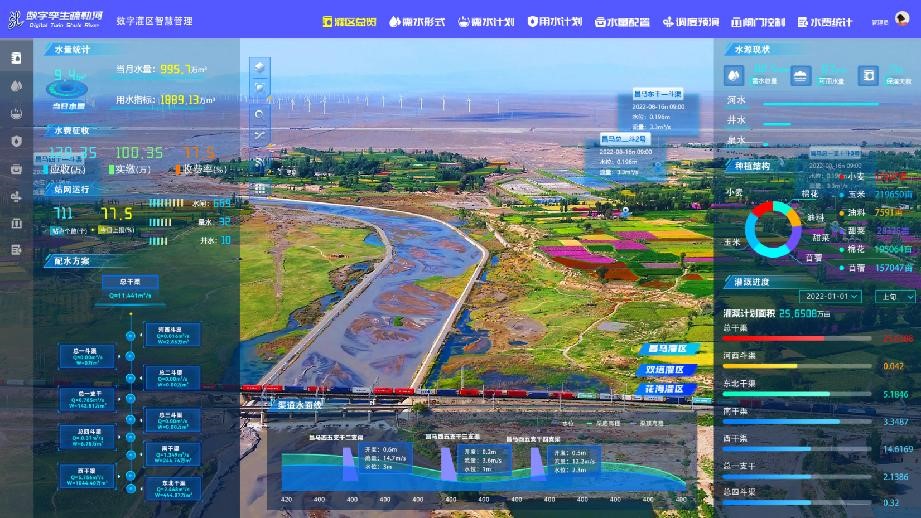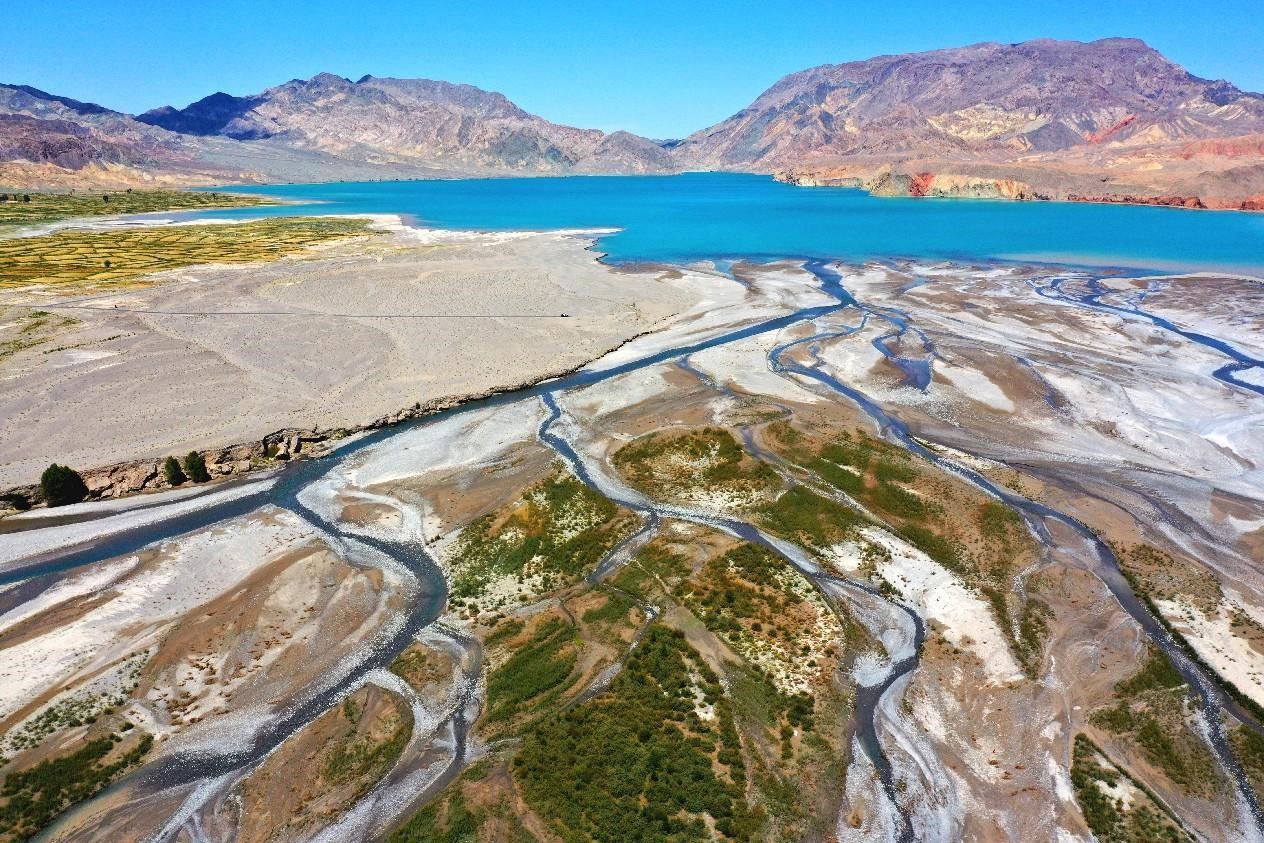China's Gansu province powers water conservancy with digital twin technology

The digital twin system of the Shule River. (Photo by the water resources department of Gansu province)
"The 'digital wings' has significantly improved our work efficiency," said Li Yujun, an official with the management office of the Shule River irrigation district in northwest China's Gansu province.
According to him, it only takes 10 minutes now to finish a patrol mission of all the irrigation canals with a total length of nearly 80 kilometers, while the work used to cost a few days.
The "digital wings" is a digital twin system of the Shule River, a national pilot project launched by China's Ministry of Water Resources in February this year. The project has created a virtual version of the Shule River in the digital world, which simulates all factors of the physical river and the whole process of water management based on the physical river basin, spatial-temporal data, mathematical models and water conservancy knowledge.
"To make it simple, it is a 'twin' of the river and water conservancy projects in the virtual world. The sensors deployed along the water course and on the bank slopes can 'feel' what's happening like a neural network," said Xia Tian, director of the cyber security office of the information center of Gansu province's water resources department.
He told People's Daily that the digital twin system is like a brain of the river and water conservancy projects, which can not only forecasts potential hazards and predicts the development of possible emergencies such as floods, but also makes dynamic emergency response plans.
The Shule River is a typical inland river in the arid region of northwest China. The Shule River irrigation district is the largest surface irrigation area in Gansu province, which covers 89,333 hectares of farmland.

The digital twin system of a water diversion project designed to deliver water from the Taohe River, a major tributary of the Yellow River in Gansu province. (Photo by the water resources department of Gansu province)
Li said a digital management platform has been established for the Shule River irrigation district, which includes 698 monitoring sites of end-canal metering, 106 sets of controlling and surveying gates and 28 radar monitors for water level measurement. The platform is able to track real-time water information from the source of the reservoir to end-canals.
The water resources department of Gansu province has also built a monitoring and warning system for flash flood disasters in the Zhouqu section of the Bailongjiang River, a tributary of the Jialing River, which runs through many counties and districts.
"So far, we have set up a real-time monitoring network and an automatic warning system in the 123-square kilometer densely populated area in the Bailongjiang River basin," said Xia.
The system can offer pre-warning for outlet cross sections of 53 small watersheds and key cross sections along the 66-kilometer main river course.
In addition, the digital twin technology is also contributing to a water diversion project designed to deliver water from the Taohe River, a major tributary of the Yellow River in Gansu province.

Photo shows the Shule River in Jiuquan, northwest China's Gansu province. (People's Daily Online/Wu Xuezhen)
As the longest cross-river water diversion project in Gansu province, the project has canals totaling nearly 1,070 kilometers, almost 400 kilometers longer than the main stream of the Taohe River.
"For the water diversion project, which features a long distance, large quantities of tunnels and ceaseless operation, we have built a whole-process intelligent management system that creates a real-time digital twin, thus improving the project's operation safety and dispatching capability," said a manager of Gansu Water-Saving Technology Development Co., Ltd., the company that built the system.
According to him, the system has significantly lowered the energy consumption of water distribution facilities and improved the utilization of water supply to over 95 percent. Besides, it also lowered operational and management cost, and largely quickened failure response.
Photos
Related Stories
Copyright © 2022 People's Daily Online. All Rights Reserved.









